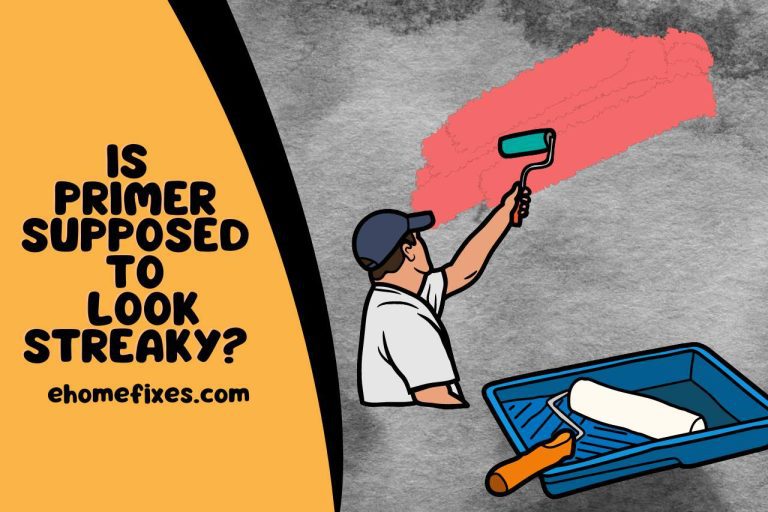PEX Pipe Insulation in Crawl Spaces: Tips and Tricks
Pex pipes are one of the best piping alternatives in the plumbing game. However, it comes down as a huge question when it regards insulation in the basements, crawl spaces, attics and similar locations. How to insulate PEX pipe in crawl space? Why is insulation important? Stuck – aren’t you?
Fret not, stick around, and we will walk you through everything related to the context and make you a mini plumbing expert.
Insulation of pex pipes is no subject to be ignorant about as it can create several problems in the pipeline in the long run. It can end up in a small leak or even burst to pieces. Thus the matter can hardly be underestimated.
As we move into the disclosure, we will break down the whys and how-to agenda you are in despair of. Buckle up, folks!
What is PEX Pipe?
Before you rub your heads and ponder why to insulate pex pipe and how to do so, it would do you good to have a clear understanding of what they are in the first place.
Pex pipes are a cross-linked polyethylene pipe type that is renowned for its flexibility.
Compared to their counterparts, such as copper, galvanized steel, etc., they step up in the game with their flexible structure and ability to withstand climatic fluctuations in and around the area.
Due to their pros over conventional piping, many constructions are adopting pex pipes into their plumbing system nowadays.
Personality perfect. How about their appearance?
Well, pex pipes only come in two signature colors – red and blue. However, due to the rising popularity and need for other hues, some brands are also producing white-colored pex pipes to check off people’s requirements.
Moreover, you do not need any help from glues when it comes to sticking the pipes. They work by connecting using clamps or rings, which provides better convenience.
Given their performance and appearance, they make an excellent pipeline for any plumbing project.
Why Insulate Pex Pipes in Crawl Space?
Regardless of the type of pipe, all pipes will face several issues with climatic fluctuations, especially in winter and cold environments.
Generally, pipes will freeze, expand and burst during weather conditions and cost you a fortune with several repairs here and there throughout the pipeline. Pex pipes do not escape this cruel destiny either.
However, given the exceptional flexibility of pex pipes, they do not burst like their counterparts. During freezing, they will safely expand and stay sound. Nevertheless, a tiny possibility remains of bursting, even though it is negligible.
How does Insulation Help the Pex Pipes?
When the cold water flows in through the pipes or even freezes within the pipe, it will attract surrounding hot molecules in the atmosphere, which will then condense onto the pipe’s exterior. This can create a big-time mess!
Condensed water on pex pipes can lead to the growth of mold, water dripping, damage to the floor (in case the water drips and falls onto the floor or other significant surfaces), and more; you wouldn’t want to bear the consequences. All these problems will cost you a handful to get repaired.
Insulating the pipe shoves all these potential problems off-the-charts, which is why it remains essential to insulate pex pipes, especially in places like crawl spaces.

How to Insulate Pex Pipe in Crawl space?
Now that you know the importance of insulating pex pipes, the next question relates to how you can do it.
Insulating a pex pipe is not rocket science. You are good to go as long as you’ve got some handyman skills and are down for a little adventure. You can DIY with no professional assistance.
Let us help you with where to begin and what to do comprehensively.
- Before you kick start the venture, please ensure the pipes that are about to get insulated are clean and grime-free. If debris and dirt are on the pipes, the insulation process could become hard. So it would be best if you cleaned them beforehand.
- Next, inspect and identify the length and shaping of every nook to determine how much insulation material you will need throughout the project. In some places, you will need a straight and lengthy piece, whereas, in the bends, you will need a different one. Sometimes you won’t be able to place the insulation material in complicated slots. Opt for a strip in such cases.
- Up next comes the critical step – pipe coverage. Wrap your insulation material around the pipe in loops. If it is not self-stickable, use duct tape to line the pipes first and wrap the insulation material in the same circular manner. Make sure the pipe is fully and thickly covered.
- If you encounter a spot where you need to cut the insulation material and restart, or if the insulation material ends, when restarting, always make sure you start from an inch or two onto the pre-insulated area.
- When dealing with the corners, you can either wrap them with the insulation material or miter the ends.
- Once all is good, take care of the faucet. The faucet is the main culprit for pipe bursting in cold seasons. So cover it around well or opt for a frost-proof faucet. Either option can put you on the safe side of the team.
And that’s a wrap! You have successfully insulated the pex pipe in your crawl space.
Tips for Installing PEX Pipe Insulation
- Go for foam as the insulation material, as it can regulate heat transmission at shallow levels and facilitate better flexibility.
- Give special attention to the faucet as it is the main guy who can bring out a disaster. Proper insulation, except the faucet, can still lead to the same chaos as an uninsulated pex pipe. Settling for a frost-proof faucet is an excellent solution.
VIDEO CREDITS: Home Repair Tutor YouTube Channel
Best Insulation Material for PEX Pipes in Crawl Space
There are several options of materials when it comes to insulating pex pipes. Among all, ‘foam’ is proven to be the most suitable and handy option as it will keep up the pipes’ flexibility to a greater extent and provide maximum safety.
Discover More: Related Articles You Can’t Miss







